Quick. Name us 10 Malaysian women who've contributed to the country (and beyond), especially in science, technology, engineering, and mathematics (STEM) without the help of Google.
Difficult? It shouldn't be.
There are plenty of successful women in Malaysia who've achieved great things. Tun Dr Siti Hasmah Mohd Ali, Tan Sri Dr Jemilah Mahmood, Datuk Dr Mazlan Othman, Dr Betty Sim Kim Lee and Professor Datuk Dr Aileen Tan, to name a few.
Sadly, we don't hear as much about them or their achievements as we should.
.gif)
Even in 2020, gender gap still persists in many sectors, but women have been - and will continue - breaking the glass ceiling.
Recognising the gap in representation of successful Asian women, World Scientific is publishing a series of picture books called 'Women Who Shaped Asia', telling the story of inspiring women starting with 'Tun Dr Siti Hasmah Mohd Ali: The Accidental Doctor'.
Dr Siti Hasmah is a great example of a Malaysian woman who broke many glass ceiling and paved the path for others to walk a less traditional path.
Rojak Daily was lucky enough to be able to interview the three women who wrote and illustrated the book - authors Eva Wong Nava and June Ho, and illustrator Debasmita Dasgupta.
Wong Nava was researching picture book autobiography for a mentorship programme, 'Picture Book Matters', that she runs with Debasmita when she realised that most of the books came either from the United States of America or the United Kingdom.
"Where are are those from our region? That was my main inspiration.
"So, I got together with June and I said look, you read books, you review books... so, how about we propose a series of books concentrating mainly on the women of Asia," she said, adding that she then roped in Debasmita, whom she's worked with on other projects.
Debasmita, who've worked on multiple projects illustrating change makers, loved the idea and was on board.
So was Ho, who said that being women, the three of them wanted to celebrate the strength together and start the project strong.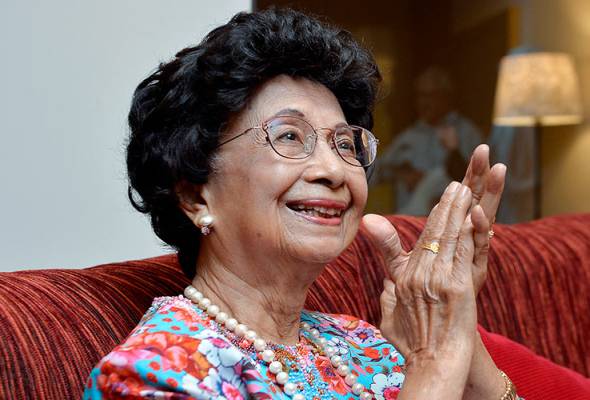
The trio had a list of names they proposed to World Scientific, but Tun Dr Siti Hasmah was probably one of the favourites from the get go.
"I have met Tun Siti on few occasions, and she has her own memoir as well. We thought, you know what… we don’t want to wait till adulthood to read about her inspiring story. Let’s start now.
“She has a very different background as well… growing up at a completely different time. I guess everything just fell into place. She herself is a great storyteller and has a great story that’s worth sharing," Ho shared.
The publisher, who was interested enough to buy the rights to the series on proposal alone before a manuscript was even produced, also agreed that Tun Dr Siti Hasmah's story would be the perfect way to start the series.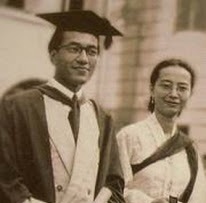
Most people know Tun Dr Siti Hasmah as the wife of former Prime Minister Tun Dr Mahathir Mohamad but very few are aware of her story and achievements independent of him.
In fact, when we googled her name, aside from news about the new picture book on her, most of the search results were about her husband, their relationship and even her secret to a long life.
It took a little bit more patience to get to the parts about her being one of the first Malay women doctor in the country when most girls didn't even finish school, her contribution to public healthcare such as her role in improving mother and child care in the country, and much more.
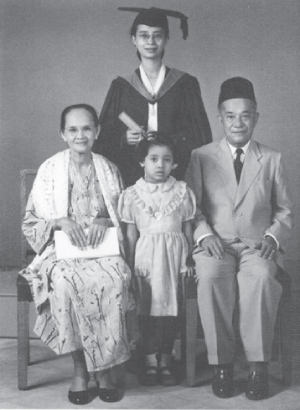
Even after her marriage to Tun Dr Mahathir soon after her graduation, having seven children and standing by her husband through his political career, Tun Dr Siti Hasmah pursued her own dreams.
That too in a way that can be appreciated by children between the ages of four and ten.
"The research process for biographies… there’s nothing that anyone can make up. There were tons of research.
"I didn’t just read Tun Siti’s memoire, but I also read about World War II, how people lived, what was life was like in Malaya at that time," Wong Nava said.
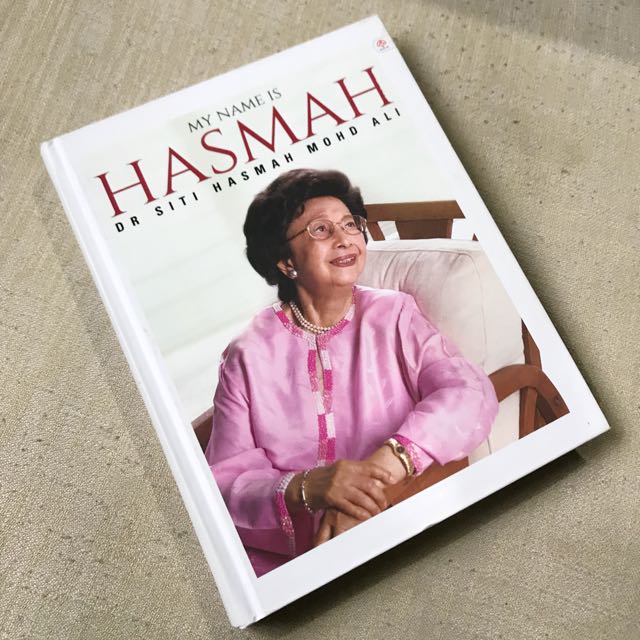
As an Art Historian, that type of research was not new to her but where does one start?
The trio decided that since the picture book was meant for children, they'd start the story from Tun Dr Siti Hasmah's childhood.
"We decided to start at childhood because then they (the children) see themselves and they get drawn in.
"Then she grows up… they watch her grow up, dream and aspire to be something else before she became doctor," Wong Nava shared.
"The process was intense. Condensing all that into a manuscript that’s under 1000 words...it was quite fun. I enjoyed it. Got a lot of grey hair after," she joked.
.gif)
Ho said that it helped to work with another person who could help cross check the information they had.
"Tun Siti is very lovely and quick to come back to us to with clarifications. It’s the smallest things but it still matters," she said adding that little details such as when the subject started wearing glasses or the correct name of her faculty were some of the things that had them going back and forth..jpg)
Illustrating the book was no easy feat either.
Since the story moved through several decades, Debasmita had her work cut out for her.
A lot of research went into learning little details - from the kind of furniture a house during Tun Dr Siti Hasmah's younger days would have had to the kind of fashion and fabric that were the style back then - many hours of looking through old pictures and documents went into creating the illustrations.
"I had to be very particular about capturing visual details that you see evolving over time. Starting from the 1930s, I had to pay attention to the kind of dresses they were wearing, the landscape and even the motives on fabrics and furniture.
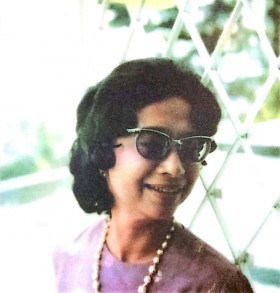
"We had so many discussions about the glass frame," she said.
Debasmita said that had to discuss many aspects of the illustrations with Wong Nava and Ho.
Ho also managed to get photographs, fabric and other details from Tun Dr Siti Hasmah's office.
"In the illustrations, you’ll actually see that it was made with mixed media. There were digital illustrations, there were painting and photographs of real fabric material because I wanted to show the batik material and all as it was," she shared.
Despite the amount of work that went into the illustrations, Debasmita said that it was a very exciting and enriching process for her..gif)
Ho said that through the story, they wanted to inspire children with the achievements of people who've done great things but at the same time remind them that those people were once children too.
"At that point even they didn’t know what they’d become. As a child, you don’t either and there’s the possibility to achieve great thing," she said.
She added that although gender equality has come a long way since Tun Dr Siti Hasmah's younger days, gender gap still exists in some spheres and they wanted to break the barrier that stops girls from pursuing their interests.
"Girls can like physics, chemistry and other things too. Here are women who've already proved it," she said.
Wong Nava said that children also needed to learn not to take things for granted.
"Many girls are doctors, there are more engineers nowadays but looking at Tun’s time, there weren’t many but she became a doctor despite all the challenges.
"We also want girls now and in the future to not take that for granted. Somebody made it possible for them. Somebody was the beacon," she said.
Debasmita said that there was a need to tell the stories of Southeast Asian women as there weren't many out there.
"As artists, we have responsibility to tell these stories. These stories are not just for women but also for boys.
"They also have to know that women — and men, they can all do what they want to do, you know. It’s all about dreams, aspirations and getting the conducive environment to reach that potential," she said..jpg)
'Tun Dr Siti Hasmah Mohd Ali: The Accidental Doctor' is a much needed story about a successful woman in science who beat all odds to become who she is today.
If, like many of us, you don't yet know her story, get a copy now at a MPH, Kinokuniya or Times Bookstore near you, on Amazon or here.
The book also comes with an activity section. It's a perfect way to talk about the book and all the topics that are portrayed in it with your children.
Who know? It just might be the inspiration your child(ren) need to push them to reach for the stars.
Difficult? It shouldn't be.
There are plenty of successful women in Malaysia who've achieved great things. Tun Dr Siti Hasmah Mohd Ali, Tan Sri Dr Jemilah Mahmood, Datuk Dr Mazlan Othman, Dr Betty Sim Kim Lee and Professor Datuk Dr Aileen Tan, to name a few.
Sadly, we don't hear as much about them or their achievements as we should.
.gif)
Even in 2020, gender gap still persists in many sectors, but women have been - and will continue - breaking the glass ceiling.
Recognising the gap in representation of successful Asian women, World Scientific is publishing a series of picture books called 'Women Who Shaped Asia', telling the story of inspiring women starting with 'Tun Dr Siti Hasmah Mohd Ali: The Accidental Doctor'.
Dr Siti Hasmah is a great example of a Malaysian woman who broke many glass ceiling and paved the path for others to walk a less traditional path.
Rojak Daily was lucky enough to be able to interview the three women who wrote and illustrated the book - authors Eva Wong Nava and June Ho, and illustrator Debasmita Dasgupta.

The inspiration
Wong Nava was researching picture book autobiography for a mentorship programme, 'Picture Book Matters', that she runs with Debasmita when she realised that most of the books came either from the United States of America or the United Kingdom. "Where are are those from our region? That was my main inspiration.
"So, I got together with June and I said look, you read books, you review books... so, how about we propose a series of books concentrating mainly on the women of Asia," she said, adding that she then roped in Debasmita, whom she's worked with on other projects.
Debasmita, who've worked on multiple projects illustrating change makers, loved the idea and was on board.
So was Ho, who said that being women, the three of them wanted to celebrate the strength together and start the project strong.
Deciding on Tun Dr Siti Hasmah's story

The trio had a list of names they proposed to World Scientific, but Tun Dr Siti Hasmah was probably one of the favourites from the get go.
"I have met Tun Siti on few occasions, and she has her own memoir as well. We thought, you know what… we don’t want to wait till adulthood to read about her inspiring story. Let’s start now.
“She has a very different background as well… growing up at a completely different time. I guess everything just fell into place. She herself is a great storyteller and has a great story that’s worth sharing," Ho shared.
The publisher, who was interested enough to buy the rights to the series on proposal alone before a manuscript was even produced, also agreed that Tun Dr Siti Hasmah's story would be the perfect way to start the series.
The subject

Most people know Tun Dr Siti Hasmah as the wife of former Prime Minister Tun Dr Mahathir Mohamad but very few are aware of her story and achievements independent of him.
In fact, when we googled her name, aside from news about the new picture book on her, most of the search results were about her husband, their relationship and even her secret to a long life.
It took a little bit more patience to get to the parts about her being one of the first Malay women doctor in the country when most girls didn't even finish school, her contribution to public healthcare such as her role in improving mother and child care in the country, and much more.

Even after her marriage to Tun Dr Mahathir soon after her graduation, having seven children and standing by her husband through his political career, Tun Dr Siti Hasmah pursued her own dreams.
Making the book a reality
How do you condense the life of a person who've lived for over nine decades, seen and done things that many of us can't even imagine, and achieved so much in a picture book of 32-pages front to back?That too in a way that can be appreciated by children between the ages of four and ten.
"The research process for biographies… there’s nothing that anyone can make up. There were tons of research.
"I didn’t just read Tun Siti’s memoire, but I also read about World War II, how people lived, what was life was like in Malaya at that time," Wong Nava said.

As an Art Historian, that type of research was not new to her but where does one start?
The trio decided that since the picture book was meant for children, they'd start the story from Tun Dr Siti Hasmah's childhood.
"We decided to start at childhood because then they (the children) see themselves and they get drawn in.
"Then she grows up… they watch her grow up, dream and aspire to be something else before she became doctor," Wong Nava shared.
"The process was intense. Condensing all that into a manuscript that’s under 1000 words...it was quite fun. I enjoyed it. Got a lot of grey hair after," she joked.
.gif)
Ho said that it helped to work with another person who could help cross check the information they had.
"Tun Siti is very lovely and quick to come back to us to with clarifications. It’s the smallest things but it still matters," she said adding that little details such as when the subject started wearing glasses or the correct name of her faculty were some of the things that had them going back and forth.
Illustrating different times in history
.jpg)
Illustrating the book was no easy feat either.
Since the story moved through several decades, Debasmita had her work cut out for her.
A lot of research went into learning little details - from the kind of furniture a house during Tun Dr Siti Hasmah's younger days would have had to the kind of fashion and fabric that were the style back then - many hours of looking through old pictures and documents went into creating the illustrations.
"I had to be very particular about capturing visual details that you see evolving over time. Starting from the 1930s, I had to pay attention to the kind of dresses they were wearing, the landscape and even the motives on fabrics and furniture.

"We had so many discussions about the glass frame," she said.
Debasmita said that had to discuss many aspects of the illustrations with Wong Nava and Ho.
Ho also managed to get photographs, fabric and other details from Tun Dr Siti Hasmah's office.
"In the illustrations, you’ll actually see that it was made with mixed media. There were digital illustrations, there were painting and photographs of real fabric material because I wanted to show the batik material and all as it was," she shared.
Despite the amount of work that went into the illustrations, Debasmita said that it was a very exciting and enriching process for her.
Inspiring girls, and boys, everywhere
.gif)
Ho said that through the story, they wanted to inspire children with the achievements of people who've done great things but at the same time remind them that those people were once children too.
"At that point even they didn’t know what they’d become. As a child, you don’t either and there’s the possibility to achieve great thing," she said.
She added that although gender equality has come a long way since Tun Dr Siti Hasmah's younger days, gender gap still exists in some spheres and they wanted to break the barrier that stops girls from pursuing their interests.
"Girls can like physics, chemistry and other things too. Here are women who've already proved it," she said.
Wong Nava said that children also needed to learn not to take things for granted.
"Many girls are doctors, there are more engineers nowadays but looking at Tun’s time, there weren’t many but she became a doctor despite all the challenges.
"We also want girls now and in the future to not take that for granted. Somebody made it possible for them. Somebody was the beacon," she said.
Debasmita said that there was a need to tell the stories of Southeast Asian women as there weren't many out there.
"As artists, we have responsibility to tell these stories. These stories are not just for women but also for boys.
"They also have to know that women — and men, they can all do what they want to do, you know. It’s all about dreams, aspirations and getting the conducive environment to reach that potential," she said.
Get a copy now
.jpg)
'Tun Dr Siti Hasmah Mohd Ali: The Accidental Doctor' is a much needed story about a successful woman in science who beat all odds to become who she is today.
If, like many of us, you don't yet know her story, get a copy now at a MPH, Kinokuniya or Times Bookstore near you, on Amazon or here.
The book also comes with an activity section. It's a perfect way to talk about the book and all the topics that are portrayed in it with your children.
Who know? It just might be the inspiration your child(ren) need to push them to reach for the stars.






